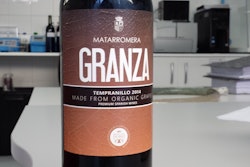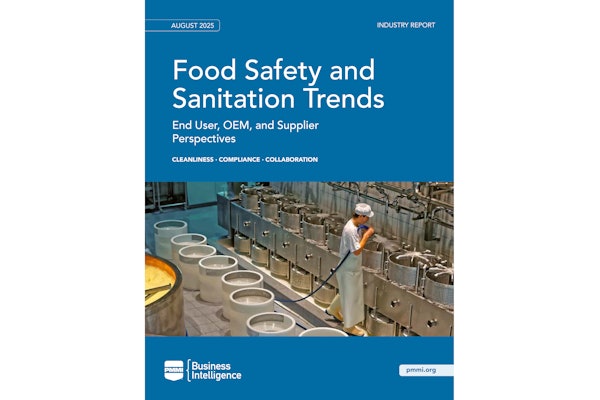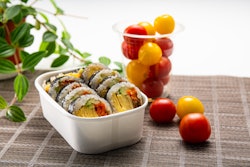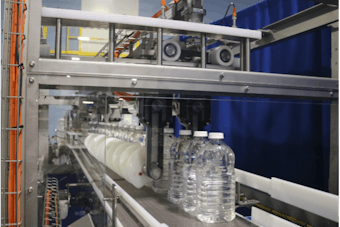If there’s a question most asked of burger customers, it’s: “Would you like fries with that?” Based on recent months, another question — although not explicitly posed — would seem to be: “Would you like redesigned packaging with that?”
It’s well accepted that packaging, via shelf-impact, influences the purchases of goods sold in retail stores. The fast-food industry is a different environment; consumers don’t order a McDonald’s Big Mac or a Burger King Whopper because of the packaging. Patrons of either franchise are there, having identified the particular restaurant by its outdoor signage: a logo perched high on a pole visible from afar. That outdoor signage is fixed and not take-along; and, using McDonald’s as the example, customers don’t leave with miniature, car-roof-mountable golden arches, or even car window decals, for that matter, to advertise the brand.
No, post-purchase advertising is the province of packaging. It’s the cartons, wrappers, cups, and bags that advertise outside the place-of-purchase, for example, at workplaces, cafeterias, and public locations. That’s in addition to the advertising done as consumers carry their packaged purchases to wherever it is that consumption of the meals occurs.
To be effective in the aforementioned roles, the packaging not only must differentiate, but must also communicate what’s iconic about the brand. The latter is more complex than emblazoning the packaging with logos, even though those elements always should be present. With these types of package redesigns, the need is to meld the iconic with the new, to avoid a perception of datedness, in fast-paced times.
Yes, but from a targeting perspective, whose perception rules? The millennials, say corporate spokespersons, and by generational psychographics, it makes sense, and not just because of their numbers. Say what one will about their food, the burger behemoths serve it fast; however, with millennials, in particular, speed is not enough. Short of instantaneous order-fulfillment, the challenge is how to get millennials — a group characterized by equal parts engagement and distraction — to take notice long enough to identify with the packaging, namely its graphics.
As with all packaging projects, success hinges on adopting a systems approach, in this case, recognizing that the redesigned packaging is a component of the consumer’s overall experience with the franchise. Everything about that experience — menu, order placement, décor, Wi-Fi, apps, workers, etc. — combine, in gestalt fashion, to bestow an image to the brand. As a result, the consumer forms an impression of the brand, be it positive, negative, or neutral. Ideally, it’ll be the hoped-for impression, but it’s far from automatic. So, did either McDonald’s or Burger King successfully redesign its packaging to project the desired image and make the desired impression on consumers?
What can be objectively said about the McDonald’s graphics is that they are bold. The bags, for example, sport the golden arches (eliminating them would constitute designer malpractice) in addition to displaying a single color, almost neon in its brightness, in which a single word (i.e. McDonald’s, Big Mac, Egg McMuffin) is rendered. Each word, however, is not rendered horizontally in the conventional way; rather, each word is broken into parts, of varying font sizes, and those parts stacked. Whether it all amounts to the hip, progressive message sought is a subjective matter, yet to be determined.
Burger King’s take on modernity also is exampled by its redesigned bags. The obligatory logo is stamped front and back. The rest is delivered in green, red, brown, and yellow (chosen to invoke associations with the ingredients of a Whopper, maybe?): large letters on the front and thick, stacked, horizontal bars wrapping around the side and onto the back. As said of the McDonald’s redesign, whether Burger King’s redesign hits its mark can’t be objectively determined presently.
McDonald’s and Burger King each have thousands of restaurants, operated across scores of countries. With that in common, it’s only to be expected that the objective in each case is a redesign that works globally. That the two companies can pursue essentially the same objective but nonetheless decide on quite different designs should not be surprising. Design firms translate clients’ objectives differently. Clients evaluate alternative designs differently. A design can win the client’s approval but not win the consumer’s approval, a common-sense realization that underscores the importance of constantly monitoring for the next redesign.
It’s reasonable to predict that competitive pressures will result in shorter times between redesigns. McDonald’s is a case in point. Its prior redesign was launched in 2013, not long ago from a redesign perspective, shorter yet considering that McDonald’s says that the present redesign began in 2014! What such a tight sequencing signals is that the aforementioned objective of a global design will not change, but will need to be reinterpreted frequently and creatively.
Packaging redesign need not be all aesthetics and no functionality. The graphics on Burger King’s wrappers arguably are sprightly enough to be sure. Additionally, a part of the design marks the center of the wrapper, making for faster placement of the burger and faster wrapping of it.
In further search of functionality, McDonald’s and Burger King would do well to investigate the specialty paper supply market. Constructions that provide greater grease-resistance would expose consumers less to stained car seats, and even more annoying, stained laps. Constructions that provide greater wet-strength would expose customers less to bags that rupture and spill their contents. And why not wrappers with better fold properties, that remain tighter around the food until removed by the consumer. Moving to plastics, cup lids that snap on faster and stay on more securely would be a welcomed improvement.
Sustainability, of course, factors into the equation with fast-food packaging. The majority of McDonald’s and Burger King packaging is fiber-based, explaining why those companies have made various pledges committing to post-consumer recycled content, for example. What shouldn’t be minimized, however, are practical limitations to the use of such packaging in direct-food-contact applications.
In summary, McDonald’s and Burger King have assigned packaging a meaningful role in their brand strategies. Another way of stating it is that, on packaging, they are betting their buns.
____________________________________________________________________
Sterling Anthony, CPP, is a consultant specializing in packaging, marketing, logistics, and human-factors. His contact information: 100 Renaissance Center, Box-176, Detroit, MI 48243; telephone 313-531-1875; [email protected]; www.pkgconsultant.com


























